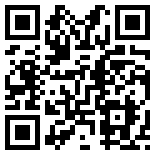Editors Draft: $Date: 2012/02/13 21:57:32 $ [analysis
& changelog]
This document is an unapproved in-progress draft and should not be referenced or quoted under any circumstances.
Please send comments to wai-eo-editors@w3.org (a publicly archived list).
"The power of the Web is in its universality.
Access by everyone regardless of disability is an essential aspect."
—
Tim Berners-Lee, W3C Director and inventor of the World Wide Web
[option that positions W3C, which EOWG thought important:]
The Web Accessibility Initiative (WAI) is the global leader in developing standards to make the Web more accessible to people with disabilities, including people with auditory, cognitive, neurological, physical, speech, and visual disabilities. WAI brings together individuals and organizations to build web accessibility strategies and solutions through W3C, the international standards body that develops the open standards that are the foundation of the Web.
[option that does not define W3C:]
W3C's Web Accessibility Initiative (WAI) is the global leader in developing standards to make the Web more accessible to people with disabilities, including people with auditory, cognitive, neurological, physical, speech, and visual disabilities. WAI brings together individuals and organizations implementing web accessibility strategies and solutions around the world.
[note first sentence is essentially the same. second sentence is different, and we might want to pull from both]
WAI guidelines are international standards used for designing, developing, and procuring:
WAI resources for web project managers, policy makers, people with disabilities, and educators cover:
WAI welcomes your help making the Web more accessible. You can participate in WAI by promoting accessibility guidelines, reviewing drafts, joining a Working Group, and more.
For web accessibility guidelines, resources, and participation information, start at the WAI home:

www.w3.org/WAI/